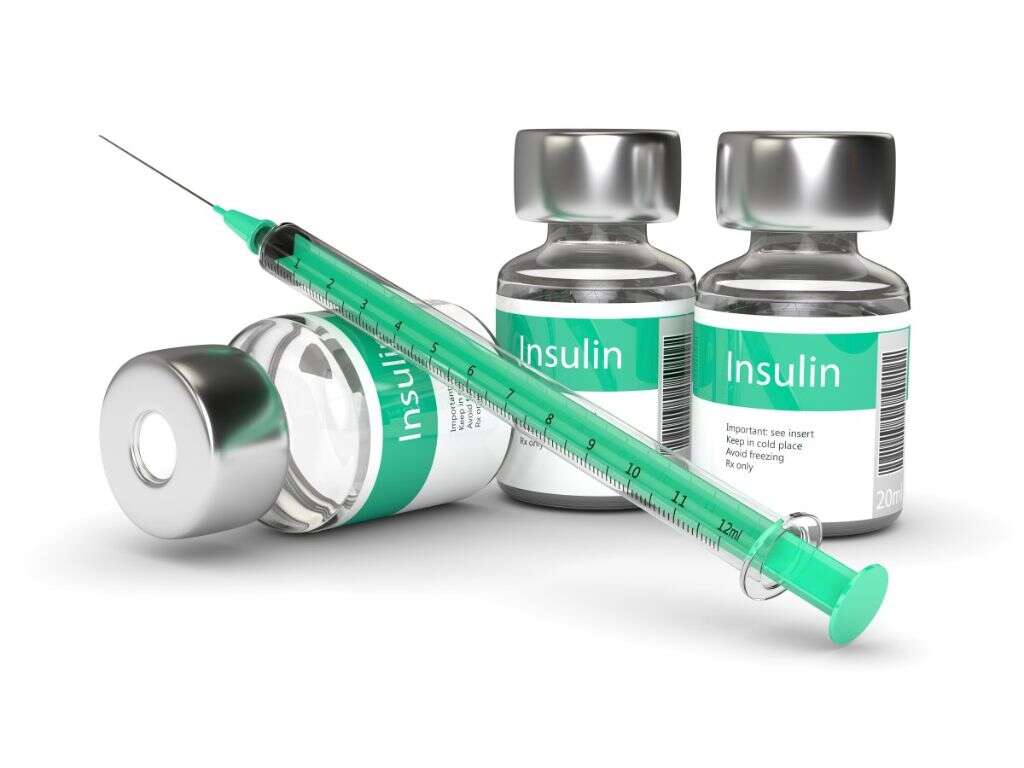What Is Gestational Diabetes?
Gestational diabetes is a condition where a woman without a history of diabetes develops elevated blood glucose levels during pregnancy. Although it may not have many symptoms, it increases the risk of pregnancy complications. Babies born to mothers with uncontrolled gestational diabetes may also face several issues.
It is the most common pregnancy-associated metabolic complication. It occurs when there is impaired insulin secretion and insulin resistance. However, the cause for these defects are still unknown. Screening for gestational diabetes is usually performed between 24 to 28 weeks of gestation. However, testing can be performed earlier for those with a high risk for gestational diabetes. Depending on the population, gestational diabetes is estimated to affect about 3% to 10% of all pregnancies.
1. Epidemiology
Gestational diabetes is the most common metabolic complication that occurs during pregnancy. It occurs in about 14% or 200,000 pregnancies in the United States every year. Between the years 1994 and 2002, the incidence of gestational diabetes doubled. This increase can also be attributed to improved diagnosis and screening tools along with soaring rates of obesity due to sedentary lifestyles and excessive intake of calories. Gestational diabetes is more common among the last 3 months of pregnancy and affects about 1% under the age of 20 and 13% over the age of 44. The risk is higher among indigenous Australians, Asians, Pacific Islanders, and Native Americans. In the majority of cases, the gestational diabetes usually resolves once the baby is born.
2. Risk Factors
Some of the risk factors of gestational diabetes are a history of gestational diabetes (with a previous pregnancy), prediabetes, impaired glucose tolerance, impaired fasting glucose, polycystic ovary syndrome, family history of type 2 diabetes (first-degree relative), higher maternal age (above the age of 35 years old), overweight, previous pregnancy of a child with high birth weight (above 4,000 grams or 8lb 12.8 oz), ethnicity (Afro Caribbeans, African Americans, Pacific Islanders, Hispanics, Native Americans, and those from South Asia), and smokers.
One study also found that women who conceive with men who are over the age of 55 years have a higher risk of gestational diabetes.

3. Pathophysiology
The main defects in gestational diabetes are impairment of insulin secretion and marked insulin resistance. All pregnancies result in increased pancreatic insulin secretion and insulin resistance as the pregnancy continues. The resistance usually begins mid pregnancy and continues until the baby is born. There is an estimated 200% to 250% increase in insulin secretion during pregnancy to help maintain a normal blood glucose level in the mother.
It is a normal change in order to provide nourishment to the fetus. Gestational diabetes occurs when the insulin secretion is inadequate. Maternal obesity and placental hormones are also factors that contributes to insulin resistance. While these cumulative factors are thought to cause gestational diabetes, the exact molecular process remains unclear.
4. Screening
Due to the negative impacts both mother and child may have, a risk assessment for gestational diabetes is performed during the first visit. The mother is then classified as high, average, or low risk. High-risk patients are screened as soon as their pregnancy is confirmed. If negative, they will be retested at 24 to 28 weeks. There are several screening and diagnostic tests that can be used to detect high glucose levels.
One method is to use screening tests and using a diagnostic test to follow up suspicious results from screening tests. For women with a high risk of gestational diabetes (such as those with acanthosis nigricans or polycystic ovarian syndrome), a more involved diagnostic test can be used during the first prenatal visit. The blood glucose level can be determined at any random time, when fasting, and 2 hours after a meal. Challenge tests will require the patient to drink a glucose solution and measure the blood glucose levels after. In individuals with diabetes, the levels will remain high.

5. Opinions on Screening
There are various opinions regarding the best screening and diagnostic measures due to lack of evidence regarding large national screening programs, cost-effectiveness considerations, and different population risks. The most elaborate program involves having a random blood glucose test during booking followed by a glucose challenge test (the mother will drink glucose) during 24 to 28 weeks of their pregnancy.
Women with a high risk may be tested earlier. While obstetric units in the United Kingdom often take into consideration the patient’s risk factors and random blood glucose, most obstetricians in the United States prefer doing a universal screening using a screening glucose challenge test. Although some may opt to forgo the routine screening due to absence of risk factors, it is not advisable as a large proportion of women with gestational diabetes have no risk factors.
6. Management
The control of blood glucose levels among women with gestational diabetes helps decrease the health issues in both mother and child. A repeat oral glucose tolerance test should be performed 6 weeks after delivery and regular screening for type 2 diabetes will be recommended after. Lifestyle interventions are the first-line of management for patients with gestational diabetes.
It includes dietary advice, regular exercise routines, relaxation, behavioral interventions, and self-monitoring glucose levels. Some studies have observed that women with gestational diabetes who change their lifestyle may have a reduced risk of postpartum depression and are more likely to lose weight after birth. The babies also tend to have less fat percentage and less likely to be large at birth.

7. Lifestyle Interventions
In terms of lifestyle intervention, patient counseling and multidisciplinary management are crucial for the best outcome. The majority of patients with gestational diabetes can be managed with exercise and dietary changes. If they are able to self monitor their blood glucose, it can help provide more information and guide them with self management. Dietary changes still require 2,000 to 2,500 kcal to provide sufficient calories for the mother.
The main goal is to avoid peaks in blood sugar levels by spreading carbohydrate intake, consuming slow-release carbohydrates, and ingesting more fiber. Regular exercise that is moderately intense is also recommended as it helps lower blood sugar and increases physical fitness.
8. Medication
If lifestyle interventions are not adequate and observation and monitoring of the pregnancy reveals failure to control blood glucose levels or complications such as excessive fetal growth, treatment with insulin may be required. This is generally fast acting insulin that is administered before meals. Insulin can cause low blood sugar levels and should be avoided. There is also evidence of oral medications that may be safe or less dangerous compared to poorly controlled diabetes. However, due to lack of evidence, it is hard to recommend one medication over the other.
Metformin may be the best option. In cases where blood glucose levels cannot be controlled using insulin alone, a combination of insulin and metformin may be a better choice as some studies have reported that those treated with a combination of metformin and insulin gained less weight and required less insulin. Babies by mothers treated with metformin were also found to have less visceral fat, making them less likely to have insulin resistance in later life. However, it is important to know that there remains a possibility of long-term complications.

9. Complications
Gestational diabetes is a condition that affects both mother and child due to high blood glucose levels. In babies, it can cause chemical imbalances and growth abnormalities after birth. This may require the babies to be admitted to the neonatal intensive care unit. These infants also tend to be large for gestational age (macrosomia) resulting in an increased risk of assisted birth where instruments such as forceps, ventouse, or a caesarean section is required.
Neonates from mothers with uncontrolled gestational diabetes are also at increased risk of low blood sugar, low blood calcium, jaundice, low blood magnesium, and high red blood cell mass. It also interferes with maturation of the baby causing them to be prone to respiratory distress syndrome after birth. There are also some studies that have shown that women with gestational diabetes are more likely to have babies with congenital malformations. However, evidence supporting this association is limited.
10. Prognosis
Most cases of gestational diabetes resolves once the baby is delivered. Based on the results of different studies, the chances of developing gestational diabetes in the subsequent pregnancy is between 30% to 84% depending on their ethnic background. A subsequent pregnancy within a year of the previous pregnancy with gestational diabetes has a high possibility of recurring.
Those with gestational diabetes have a higher risk of diabetes in the future. Those who require insulin have a 50% chance of developing diabetes in the next 5 years. Children with mothers who had gestational diabetes have a higher likelihood of childhood and adult obesity along with type 2 diabetes in later life. Both mother and child should be educated regarding preventive strategies to reduce this risk. This can be done via breast feeding, healthy eating, staying active, portion control, and reaching prepregnancy weight (with additional weight loss if required) within 6 to 12 months after delivery.










